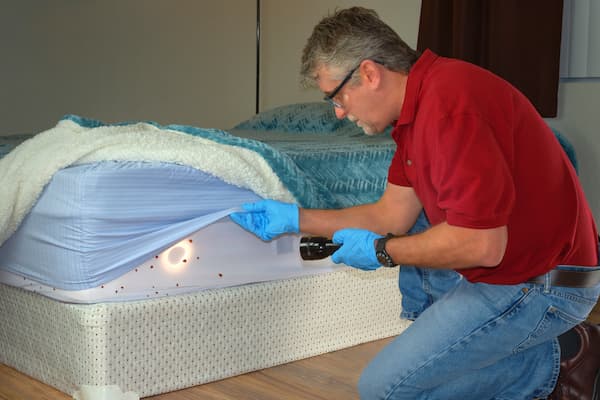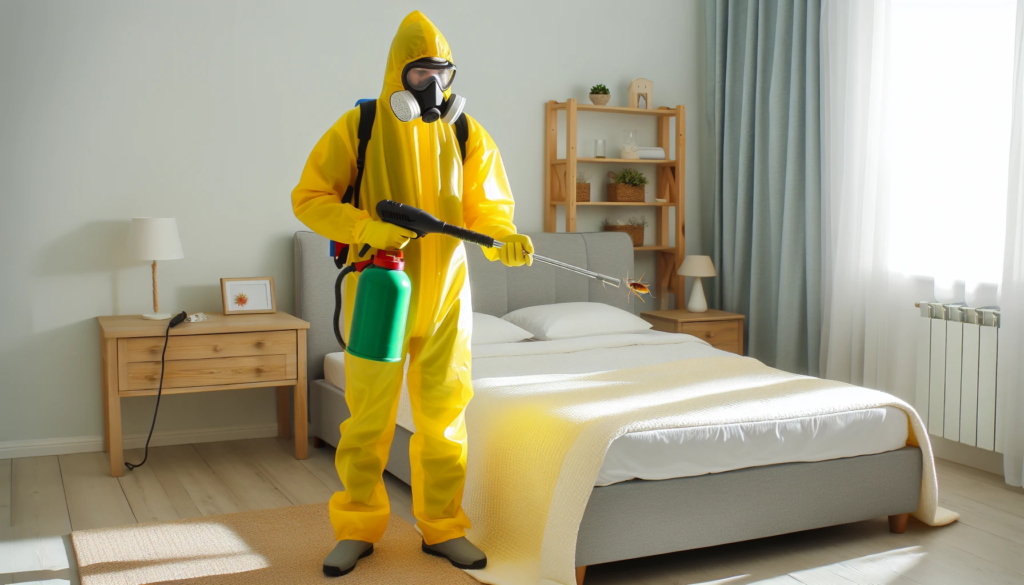Reliable Bed Bug Exterminator: DC Services with Heat Treatment
Reliable Bed Bug Exterminator: DC Services with Heat Treatment
Blog Article
Discovering the Scientific Research Behind Bed Insect Warm Treatments as a Lasting Pest Management Approach
One such method that has actually obtained grip in current years is the usage of heat treatments to deal with bed insect problems. The complexities of how warmth properly gets rid of bed pests and the wider effects for lasting parasite monitoring techniques make this a subject worth discovering additionally.
Bed Insect Warm Treatment Refine

Thermal Death Point for Bed Pests
Exposing bed pests to raised temperatures beyond their thermal resistance variety is important for accomplishing effective eradication in heat treatment procedures. The thermal death point for bed pests describes the temperature level at which these parasites can not survive. Research indicates that bed bugs begin to perish when subjected to temperature levels above 113 ° F(45 ° C) for a sustained duration. As the temperature raises, so does the death price of bed bugs. At around 118 ° F(48 ° C ), bed pests begin to pass away quickly, with a mortality rate of nearly 99% within mins of exposure. This shows the sensitivity of bed bugs to high temperature levels and highlights the performance of heat treatments in eliminating problems. By getting to and preserving temperatures over the thermal death factor for bed insects, bug monitoring specialists can guarantee extensive elimination of bed insect populaces, including hard-to-reach areas where chemical treatments may be much less reliable. Understanding the thermal fatality factor for bed insects is important for implementing effective heat therapy techniques and accomplishing lasting insect administration results.
Benefits of Warm Treatments
Having established the crucial thermal death factor for bed bugs, it is vital to currently explore the substantial advantages that heat therapies supply in effectively getting rid of these resilient parasites. Heat treatments present a number of vital advantages when contrasted to typical chemical techniques. One of the main benefits is that heat can permeate deep into fractures and crevices where bed pests hide, guaranteeing that even the most hard-to-reach locations are heated up to deadly temperatures. This comprehensive technique not just kills live bugs yet additionally targets bed pest eggs, avoiding future infestations.
Moreover, heat treatments are safe and environmentally pleasant, making them a sustainable pest administration method. Unlike chemical pesticides, read this post here heat therapies do not leave harmful residues that can posture dangers to human health or the atmosphere. This aspect is especially crucial in sensitive environments such as medical facilities, colleges, and property locations where chemical usage may not be desirable.
In addition, heat therapies have a high success price in removing bed insect problems in a single therapy, decreasing the need for numerous gos to and decreasing disruption to occupants. This efficiency not only conserves time and money yet likewise gives satisfaction to those taking care of bed insect issues.
Effectiveness of Warm Therapy

Research researches have actually consistently shown the efficiency of warmth treatments in accomplishing a high rate of bed bug mortality. Appropriately carried out warmth therapies can reach all the fractures and crevices where bed insects may be nurturing, ensuring a comprehensive approach to elimination. Furthermore, warm treatments have actually the included advantage of killing bed insect eggs, which are often resistant to standard chemical treatments. On the whole, the performance of warmth therapies in getting rid of bed bug invasions makes them a trusted and sustainable bug management approach.
Lasting Bug Monitoring Perks
Executing sustainable bug administration practices provides lasting advantages for both the atmosphere and public health and wellness. By utilizing techniques such as heat therapies for parasite control, we can lower the reliance on hazardous chemical pesticides that can have negative results on environments and human health and wellness - bed bug treatment. Sustainable parasite monitoring strategies aid in maintaining biodiversity by targeting particular bugs without hurting non-target organisms, thereby keeping a well balanced site web ecological community
Additionally, sustainable insect administration techniques add to the general health and wellness and well-being of the public. By lessening exposure to hazardous chemicals used in typical insect control approaches, warm therapies provide a safer option for pest administration in residential, commercial, and public areas. This decrease in chemical use also aids in protecting against pesticide deposits from polluting dirt, water, and air, protecting ecological quality.
Final Thought
To conclude, bed pest warmth treatments have actually been shown to be a sustainable and efficient pest management approach. The thermal fatality point for bed bugs makes them susceptible to warmth therapies, which have many advantages over conventional chemical therapies. The performance of warm treatments in getting rid of bed bug infestations while minimizing ecological influence highlights the possibility of this method as a lasting remedy for pest control.
The bed bug heat therapy process entails elevating the temperature within infested locations to a degree that efficiently gets rid of bed pests and their eggs. By reaching and keeping temperature levels above the thermal fatality point for bed bugs, pest monitoring experts can make sure thorough elimination of bed pest populations, including hard-to-reach locations where chemical treatments might be much less effective. One of the main advantages is that warmth can permeate deep into gaps and fractures where bed pests conceal, guaranteeing that even the most hard-to-reach areas are warmed to dangerous temperatures. Unlike chemical treatments that may leave behind resistant populaces, heat therapies offer a non-toxic and environmentally pleasant option that can penetrate deep into furniture, walls, and other hard-to-reach areas where bed pests conceal.
The thermal death factor for bed insects makes them prone to warm therapies, which have various benefits over standard chemical treatments.
Report this page